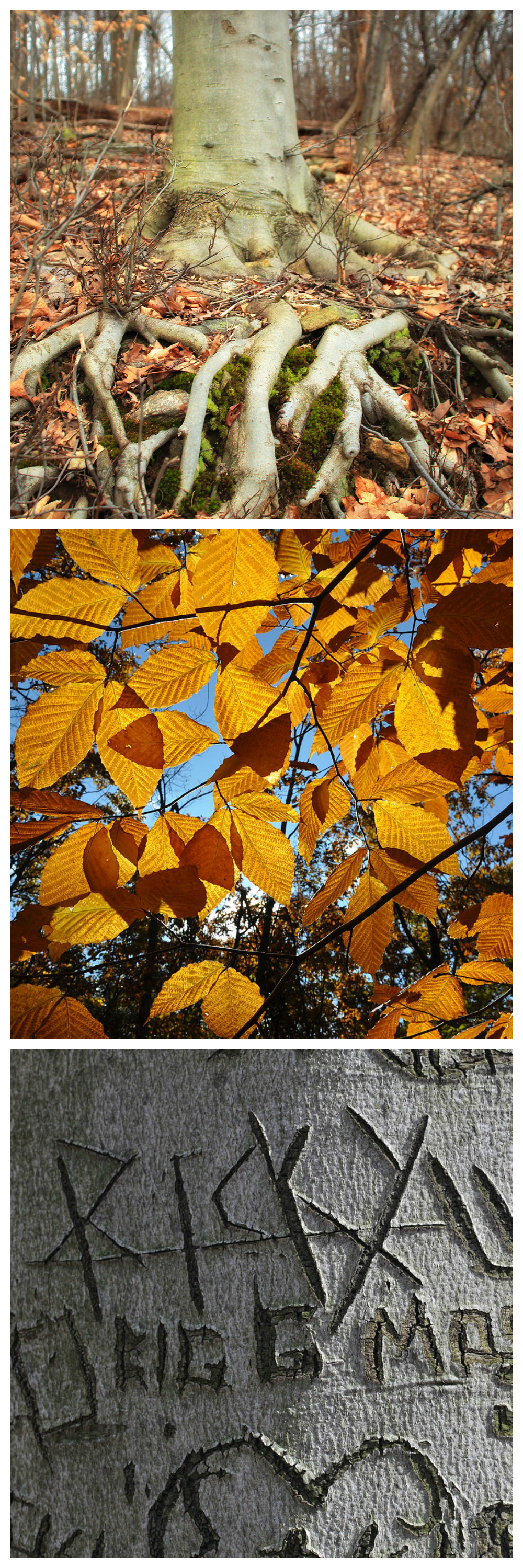American Beech : American Beech: Natural History

The roots, autumn leaves, and scarred bark of the American Beech (top to bottom: Nicholas A. Tonelli, March 2, 2013; Whit Andrews, October 25, 2009; HorsePunchKid, April 3, 2011)
The American Beech grows to be between 80 to 120 feet tall and 18 to 50 inches in diameter at breast height. It forms a stunning round shape founded by its short, thick trunks and large, low spreading branches that droop to the ground unless crowded by nearby trees. If you see a tree engraved with lovers’ initials or perhaps some friendly words, chances are this tree is an American Beech. Smooth, thin, gray bark is this tree’s trademark feature, which happens to make it an easy target for vandalism and message carving. Though the American Beech is widely considered a beautiful tree, it is unlikely to find this tree in a botanical garden or other similar landscape as horticulturists prefer its brother the European beech, Fagus sylvatica, to be used as an ornamental.
The American Beech’s leaves are simple, form an ovate shape with serrated margins, and are in an alternating pattern up the tree’s branches. They are somewhat unique compared to the leaves of other deciduous trees; they begin as a silvery green in spring before turning dark green in summer, then transform to vivid autumn colors. Nearly all dead leaves remain on the tree during winter.
It is rare to find plants growing beneath an American Beech tree since it has a shallow root system that absorbs a great deal of moisture in the ground surrounding it. These roots may sucker, shooting up dense thickets of growth that remain small and shrub-like. American Beeches only require average moisture levels, but they are sensitive to reductions and fluctuations in soil moisture. In areas of variable moisture beeches sucker vigorously, allowing their root system to absorb the most available water. The largest American Beech trees grow in soil of moist bottom lands in the southern parts of their range.
Around 40 years of age, the American Beech begins masting, or producing seeds in the form of small nuts no larger than a fingertip. Beechnuts begin to ripen in late September and will be shed from their spiky encasing once the first hard frost occurs. Despite their husk, beechnuts are sweet and edible and are an important food source to many creatures including chipmunks, black bears, blue jays, squirrels, deer, and even humans at one time.
